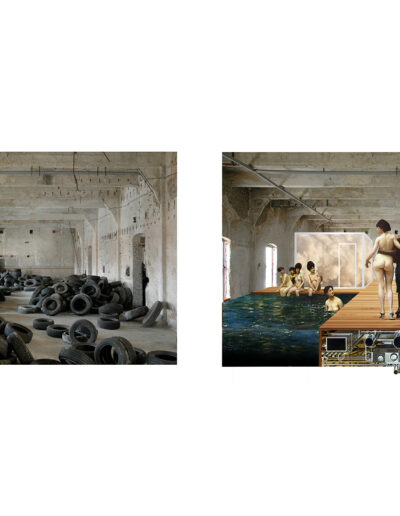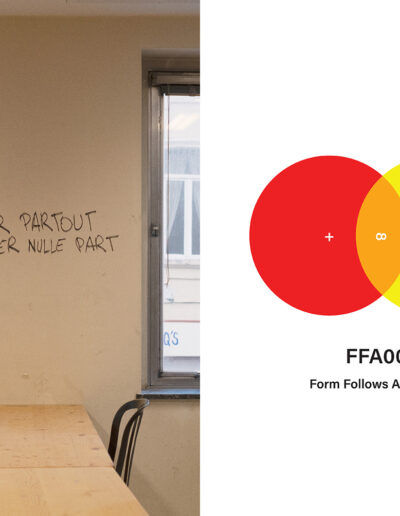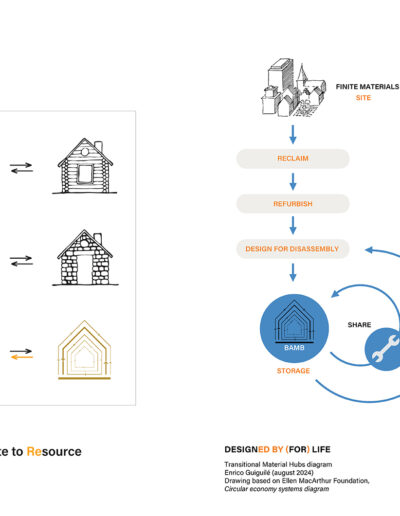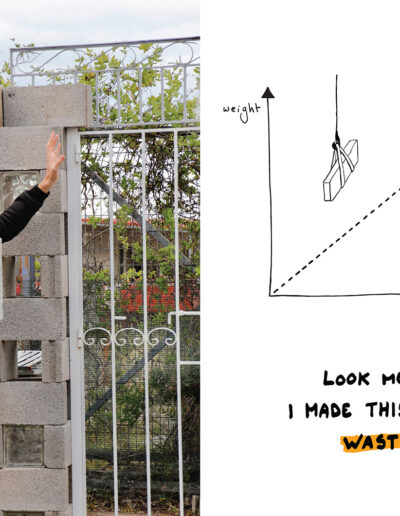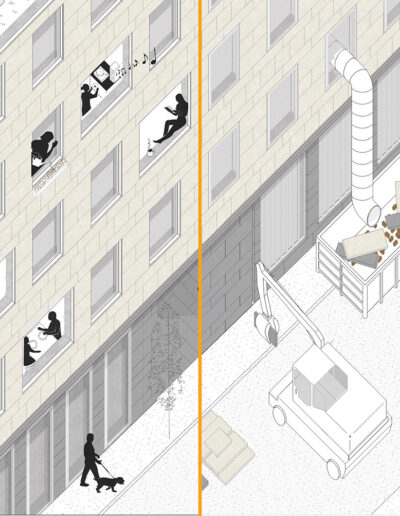Designed by (for) life
Enrico Guiguilé
Master Architectuur
2023 — 2024
studio
Spaces of Transition
promotoren
Mario Rinke
Robbe Pacquée
A collage illustrating the prospective circularity of a building’s structure, with infill renewed every 5 to 10 years.
Orange is the new black: highlighting the often overlooked middle ground between addition (+) and demolition (-).
Designed by (for) life
This master’s thesis examines how architecture can drive positive societal and environmental change. By addressing waste as an often overlooked byproduct of architectural consumption, it reimagines cities, buildings, and their constituent parts with a focus on reclaiming, refurbishing and designing for disassembly. The outcome is a low-tech framework where a city’s materials become more visible, easier to maintain, share and distribute on a human scale.
Like many cities today, Brussels faces enormous challenges in real estate development, including high vacancy rates in office buildings and a growing demand for new housing. This constant remodeling through recurring adaptations to changing needs comes with significant material demands: the annual import of construction materials totals 1.2 million tonnes, with 1.1 million tonnes subsequently exported, downcycled, or eventually turned into waste. The ongoing demand for new materials relies mostly on virgin resources, exacerbating resource scarcity and putting a strain on public transport infrastructure.
To specifically address this problem, the building on Rue Defacqz 1 in Brussels was used as a case study. After mapping the materials originally used in its construction, they were analyzed and integrated into a new circularity model based on the Ellen MacArthur Foundation’s framework for finite materials. The focus was placed on maintenance, sharing, and redistributing as key strategies for transitioning toward sustainable architecture.
The thesis proposes an architectural strategy that views buildings as dynamic material hubs rather than static entities. By emphasizing the interplay between the architectural and technical value of materials, this approach integrates the changing functional needs of buildings with the materials available within or around them. It promotes reclaiming, refurbishing, and designing for disassembly as prerequisites for allowing buildings to adapt naturally and dynamically over time.

